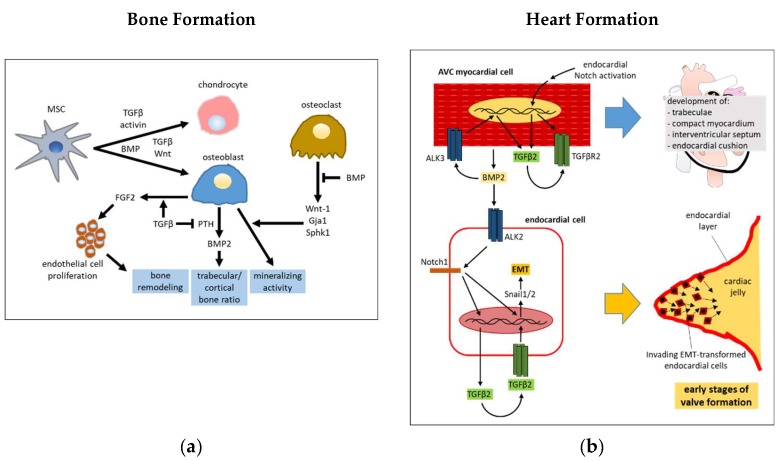Figure 2.
TGFβ and BMP interplay in bone and heart formation. (a) TGFβ can drive the differentiation of MSCs into chondrocytes or osteoblasts depending on the functional coupling with other factors, such as activin and Wnt, respectively. BMPs can induce the differentiation of these cells, but also block the production by osteoclasts of coupling factors that stimulate bone matrix synthesis activity by osteoblasts. TGFβR2 signaling is necessary to attenuate the PTH signaling that, in turn, enhances the production of BMP2, which can regulate the trabecular/cortical bone ratio. (b) AV myocardial cells require BMP2, TGFβ2, and activated Notch signaling status in endocardial endothelial cells to achieve multiple phases of heart development. BMP2 produced by myocardial cells induces the expression of Notch1 and TGFβ2 in endocardial endothelial cells. Notch1 and TGFβ2 signaling activate the EMT program that is required by these cells to invade the cardiac jelly in the early step of heart valve formation.

